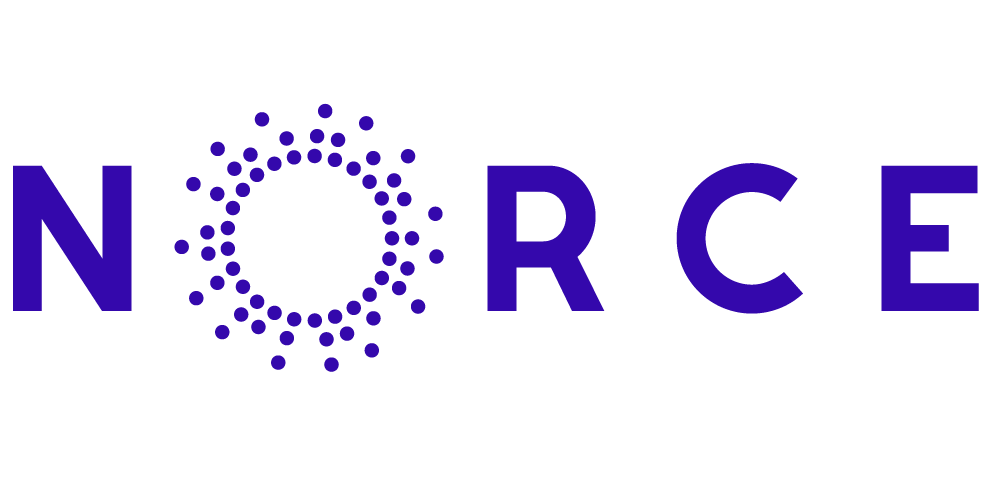About us
Publications
Home
2025
John Magnus Ragnhildson Dahl
Offline in the Closet, Online and Out, then Offline, Out and Proud: The Online/Offline-ness of Teenager's Queer Worldmaking Book Chapter
In: Reynolds, Rachel R.; Pajé, Dacia; Medina, Sienna; Gigante, John (Ed.): Mediating Sex, Gender, and Sexuality in the GenZ Era, Chapter 15, pp. 14, Routledge, 2025.
BibTeX | Tags: WP1: Understanding Media Experiences | Links:
@inbook{nokey,
title = {Offline in the Closet, Online and Out, then Offline, Out and Proud: The Online/Offline-ness of Teenager's Queer Worldmaking},
author = {John Magnus Ragnhildson Dahl},
editor = {Rachel R. Reynolds and Dacia Pajé and Sienna Medina and John Gigante},
url = {https://www.taylorfrancis.com/books/edit/10.4324/9781003631316/mediating-sex-gender-sexuality-genz-era-rachel-reynolds-dacia-paj%C3%A9-sienna-medina-john-gigante},
year = {2025},
date = {2025-09-19},
booktitle = {Mediating Sex, Gender, and Sexuality in the GenZ Era},
pages = {14},
publisher = {Routledge},
chapter = {15},
keywords = {WP1: Understanding Media Experiences},
pubstate = {published},
tppubtype = {inbook}
}
John Magnus Ragnhildson Dahl
Teen Boys and their Smartphones as Worldmaking Devices: In the Palm of their Hands Book
Palgrave MacMillan, 2025.
BibTeX | Tags: WP1: Understanding Media Experiences
@book{nokey,
title = {Teen Boys and their Smartphones as Worldmaking Devices: In the Palm of their Hands},
author = {John Magnus Ragnhildson Dahl},
year = {2025},
date = {2025-07-16},
urldate = {2025-07-16},
publisher = {Palgrave MacMillan},
keywords = {WP1: Understanding Media Experiences},
pubstate = {published},
tppubtype = {book}
}
Marianne Borchgrevink-Brækhus
Understanding news experience: The resonance between content, practices, and situatedness in everyday life Journal Article
In: Journalism, 2025.
Abstract | BibTeX | Tags: WP1: Understanding Media Experiences | Links:
@article{understanding25,
title = {Understanding news experience: The resonance between content, practices, and situatedness in everyday life},
author = {Marianne Borchgrevink-Brækhus},
url = {https://mediafutures.no/borchgrevink-braekhus-2025-understanding-news-experience-the-resonance-between-content-practices-and-situatedness-in/},
year = {2025},
date = {2025-01-21},
urldate = {2024-12-21},
journal = {Journalism},
abstract = {People relate to news in highly complex ways. Research on news audiences has identified how content reception, user practices, and spatiotemporal contexts influence relations to news. This study aims to see these dimensions as connected, emphasizing the significance of understanding how news content, practices, and people’s situatedness resonate in the context of everyday life and how this resonance reflects personal identity. Conceptually, the paper employs the concept of news experience as an analytical lens to understand the multilayered nature of how people relate to news. Empirically, six distinct forms of news experience are identified, all in which content, practices, and situatedness resonate differently: Reassurance, control, connection, relaxation, diversion, and stress. Drawing on a Norwegian three-step data collection, including recurring interviews, news diaries, data donations, and video-ethnography from the same informants, the article methodologically contributes to a more profound understanding of the dynamics involved in various forms of news experience.},
keywords = {WP1: Understanding Media Experiences},
pubstate = {published},
tppubtype = {article}
}
2024
Peder Haugfos; John Magnus Ragnhildson Dahl; Jan Kratzer; Ines Wolf
Branding or visual storytelling? How legacy media use visual journalism to reach young people in the age of digitalization Journal Article
In: Journal of Applied Journalism & Media Studies, pp. 1-24, 2024.
Abstract | BibTeX | Tags: WP1: Understanding Media Experiences | Links:
@article{AJMS_FT_art_Dahl,
title = {Branding or visual storytelling? How legacy media use visual journalism to reach young people in the age of digitalization},
author = {Peder Haugfos and John Magnus Ragnhildson Dahl and Jan Kratzer and Ines Wolf},
url = {https://mediafutures.no/ajms_ft_art_dahl-3/},
year = {2024},
date = {2024-01-19},
urldate = {2024-01-19},
journal = {Journal of Applied Journalism & Media Studies},
pages = {1-24},
abstract = {This article discusses how legacy media companies are responding to the real or imagined
challenge of reaching young people in the age of digitalization, by investigating two different
strategies for how to make use of the so-called Generation Z’s preference for sensory
and visual journalism. Through expert interviews, we present how the Norwegian public
broadcaster NRK P3 and the biggest newspaper in Norway, VG, approach the challenge of
catching young people’s attention. We identify two strategies for how legacy media companies
work with visual expressions and designing their digital content when trying to reach
a wide, fragmented young target group on digital platforms. VG is a platform-oriented
storyteller where design is connected to the direction and mode of storytelling and tailored
to fit certain platforms. Their area of focus is being where their target groups are and
meeting the visual expectations of these audiences by taking cues from what is trending on
different platforms. NRK P3 takes the approach of a traditional brander that works in
both visionary and traditional ways to build a strong, trustworthy and visible brand. We
conclude by pointing out possible problems with both approaches.},
keywords = {WP1: Understanding Media Experiences},
pubstate = {published},
tppubtype = {article}
}
challenge of reaching young people in the age of digitalization, by investigating two different
strategies for how to make use of the so-called Generation Z’s preference for sensory
and visual journalism. Through expert interviews, we present how the Norwegian public
broadcaster NRK P3 and the biggest newspaper in Norway, VG, approach the challenge of
catching young people’s attention. We identify two strategies for how legacy media companies
work with visual expressions and designing their digital content when trying to reach
a wide, fragmented young target group on digital platforms. VG is a platform-oriented
storyteller where design is connected to the direction and mode of storytelling and tailored
to fit certain platforms. Their area of focus is being where their target groups are and
meeting the visual expectations of these audiences by taking cues from what is trending on
different platforms. NRK P3 takes the approach of a traditional brander that works in
both visionary and traditional ways to build a strong, trustworthy and visible brand. We
conclude by pointing out possible problems with both approaches.
2023
Erik Knudsen
Modeling news recommender systems’ conditional effects on selective exposure: evidence from two online experiments Best Paper Journal Article
In: Journal of Communication , 2023.
Abstract | BibTeX | Tags: WP1: Understanding Media Experiences | Links:
@article{nokey,
title = {Modeling news recommender systems’ conditional effects on selective exposure: evidence from two online experiments},
author = {Erik Knudsen},
url = {https://mediafutures.no/jqac047/},
year = {2023},
date = {2023-12-23},
urldate = {2023-12-23},
journal = {Journal of Communication },
abstract = {Under which conditions do news recommender systems (NRSs) amplify or reduce selective exposure? I provide the Recommender Influenced Selective Exposure framework, which aims to enable researchers to model and study the conditional effects of NRSs on selective exposure. I empirically test this framework by studying user behavior on a news site where the choice environment is designed to systematically influence selective exposure. Through two preregistered online experiments that simulate different NRSs and unobtrusively log user behavior, I contribute empirical evidence that an NRS can increase or decrease the chance that selective exposure occurs, depending on what the NRS is designed to achieve. These insights have implications for ongoing scholarly debates on the democratic impact of NRSs.},
keywords = {WP1: Understanding Media Experiences},
pubstate = {published},
tppubtype = {article}
}
Khadiga Seddik; Erik Knudsen; Damian Trilling; Christoph Trattner
Understanding How News Recommender Systems Influence Selective Exposure Conference
Association for Computing Machinery (ACM) RecSys ’23, 2023.
BibTeX | Tags: WP1: Understanding Media Experiences, WP2: User Modeling Personalization and Engagement | Links:
@conference{behavrec2023,
title = {Understanding How News Recommender Systems Influence Selective Exposure},
author = {Khadiga Seddik and Erik Knudsen and Damian Trilling and Christoph Trattner },
url = {https://mediafutures.no/behavrec2023/},
year = {2023},
date = {2023-09-18},
urldate = {2023-09-18},
booktitle = {Association for Computing Machinery (ACM) RecSys ’23},
keywords = {WP1: Understanding Media Experiences, WP2: User Modeling Personalization and Engagement},
pubstate = {published},
tppubtype = {conference}
}
Erik Knudsen; Alain D. Starke; Christoph Trattner
Topical Preference Trumps Other Features in News Recommendation: A Conjoint Analysis on a Representative Sample from Norway Conference
Association for Computing Machinery (ACM) RecSys ’23, 2023.
BibTeX | Tags: WP1: Understanding Media Experiences, WP2: User Modeling Personalization and Engagement | Links:
@conference{inra2023-1,
title = {Topical Preference Trumps Other Features in News Recommendation: A Conjoint Analysis on a Representative Sample from Norway},
author = {Erik Knudsen and Alain D. Starke and Christoph Trattner },
url = {https://mediafutures.no/inra2023-1/},
year = {2023},
date = {2023-09-18},
urldate = {2023-09-18},
booktitle = {Association for Computing Machinery (ACM) RecSys ’23},
keywords = {WP1: Understanding Media Experiences, WP2: User Modeling Personalization and Engagement},
pubstate = {published},
tppubtype = {conference}
}
Marianne Borchgrevink-Brækhus; Hallvard Moe
The Burden of Subscribing: How Young People Experience Digital News Subscriptions Journal Article
In: Journalism Studies , 2023.
Abstract | BibTeX | Tags: WP1: Understanding Media Experiences | Links:
@article{Borchgrevink-Brækhus2023,
title = {The Burden of Subscribing: How Young People Experience Digital News Subscriptions},
author = {Marianne Borchgrevink-Brækhus and Hallvard Moe },
url = {https://mediafutures.no/the-burden-of-subscribing-how-young-people-experience-digital-news-subscriptions/},
year = {2023},
date = {2023-04-17},
urldate = {2023-04-17},
journal = {Journalism Studies },
abstract = {This paper analyzes how young non-paying news users experience digital news subscriptions in Norway. As news organizations face
declining advertising revenues, digital subscriptions are considered the sustainable financial strategy of the future, with young people a particularly challenging group to convert. We analyze the experiences of young adults who do not pay for news and identify three key dimensions to why they do not subscribe:
lack of exclusivity, subscriptions as too time-consuming, and unattractive payment models. We also detail how the informants maneuver around paywalls, and we highlight “multiperspectivism” as an overarching concern guiding the informants’ preferences. Empirically, the paper furthers our understanding of
the challenges facing business models for journalism, especially problems with long-term, provider-specific subscriptions. Methodologically, we demonstrate how a combination of recurring interviews and a media diary matching a subscription test period yields a deeper analysis of motivations for, and
experiences with, news use. Theoretically, the paper shows how approaching news through users’ experiences can provide insights not just into what users appreciate from news but also into where they consider there is a lack of value.},
keywords = {WP1: Understanding Media Experiences},
pubstate = {published},
tppubtype = {article}
}
declining advertising revenues, digital subscriptions are considered the sustainable financial strategy of the future, with young people a particularly challenging group to convert. We analyze the experiences of young adults who do not pay for news and identify three key dimensions to why they do not subscribe:
lack of exclusivity, subscriptions as too time-consuming, and unattractive payment models. We also detail how the informants maneuver around paywalls, and we highlight “multiperspectivism” as an overarching concern guiding the informants’ preferences. Empirically, the paper furthers our understanding of
the challenges facing business models for journalism, especially problems with long-term, provider-specific subscriptions. Methodologically, we demonstrate how a combination of recurring interviews and a media diary matching a subscription test period yields a deeper analysis of motivations for, and
experiences with, news use. Theoretically, the paper shows how approaching news through users’ experiences can provide insights not just into what users appreciate from news but also into where they consider there is a lack of value.
Erik Knudsen; Åsta Dyrnes Nordø; Magnus Hoem Iversen
How Rally-Round-the-Flag Effects Shape Trust in the News Media: Evidence from Panel Waves before and during the COVID-19 Pandemic Crisis Journal Article
In: Political Communication, 2023.
Abstract | BibTeX | Tags: WP1: Understanding Media Experiences | Links:
@article{Knudsen2023,
title = {How Rally-Round-the-Flag Effects Shape Trust in the News Media: Evidence from Panel Waves before and during the COVID-19 Pandemic Crisis},
author = {Erik Knudsen and Åsta Dyrnes Nordø and Magnus Hoem Iversen},
url = {https://mediafutures.no/how-rally-round-the-flag-effects-shape-trust-in-the-news-media-evidence-from-panel-waves-before-and-during-the-covid-19-pandemic-crisis/},
year = {2023},
date = {2023-02-23},
urldate = {2023-02-23},
journal = {Political Communication},
abstract = {In this study, we extend the literature on the rally ‘round the flag phenomenon, that is, that international crises tend to cause an increase in citizens’ approval of political institutions. We advance this literature and highlight its relevance for political communication research in three ways: 1) by theorizing and empirically testing two arguments for why rally effects should extend to trust in the news media on the institutional level, 2) by providing empirical evidence on how rally effects on trust in the media develop over time during an international crisis, and 3) by theorizing and testing the conditions under which rally effects on media trust are more likely to occur by studying heterogeneous effects. Through a panel design with a pre-crisis baseline of Norwegian citizens’ trust in news media, we find evidence to suggest that the compound effect of the COVID-19 pandemic crisis caused a long-lasting increase in trust in the news media in Norway, and that the degree of increase varied by citizens’ education and whether they belonged to a “high-risk” group. We also provide evidence to suggest that rally effects on news media trust are contingent on how important the news media is as a source of information about the crisis and the “trust nexus” between media trust and political trust. These insights extend our current understanding of how times of crisis affect trust in the news media.},
keywords = {WP1: Understanding Media Experiences},
pubstate = {published},
tppubtype = {article}
}
John Magnus Ragnhildson Dahl; Brita Ytre-Arne
Monitoring the infection rate: Explaining the meaning of metrics in pandemic news experiences Journal Article
In: Journalism , 2023.
Abstract | BibTeX | Tags: WP1: Understanding Media Experiences | Links:
@article{nokey,
title = {Monitoring the infection rate: Explaining the meaning of metrics in pandemic news experiences},
author = {John Magnus Ragnhildson Dahl and Brita Ytre-Arne},
url = {https://mediafutures.no/john-magnus-and-brita/},
year = {2023},
date = {2023-01-03},
journal = {Journalism },
abstract = {The COVID-19 pandemic has brought forward questions of what citizens need and want from journalism in a global crisis. In this article, we analyse one particular aspect of pandemic news experiences: Preoccupation with monitoring metrics for COVID-19 infection cases, hospitalisations, and deaths, widely disseminated through journalistic news outlets. We ask why close monitoring of such metrics appeared meaningful to news users, and what these experiences can tell us about the role of journalism in the pandemic information environment. Our analysis draws on qualitative research conducted in Norway in 2020, finding users particularly devoted to monitoring metrics, both in early lockdown and during the second wave of COVID-19. To contextualize our findings, we draw on scholarship on emotional responses to data in the everyday, and on the social role of journalism. We argue that monitoring of infection rates is an expression of trust in the media as a provider of factual information, also expressed by those who are cynical towards other aspects of journalism, and we conceptualise this monitoring practice as a coping strategy to deal with the pandemic as an unknown and uncontrollable threat, involving difficult emotions of uncertainty and fear.},
keywords = {WP1: Understanding Media Experiences},
pubstate = {published},
tppubtype = {article}
}
2021
Jelena Kleut; Ana Milojevic
Framing Protest in Online News and Readers’ Comments: The Case of Serbian Protest “Against Dictatorship” Journal Article
In: International Journal of Communication, vol. 15, no. 21, pp. 82-102, 2021, (Pre SFI).
Abstract | BibTeX | Tags: framing, Online Media, polarized media system, protest paradigm, user comments, WP1: Understanding Media Experiences | Links:
@article{Kleut2021,
title = {Framing Protest in Online News and Readers’ Comments: The Case of Serbian Protest “Against Dictatorship”},
author = {Jelena Kleut and Ana Milojevic},
url = {https://www.researchgate.net/publication/348787747_Framing_Protest_in_Online_News_and_Readers\\\\\\\\\\\\\\\\\\\\\\\\\\\\\\\\\\\\\\\\\\\\\\\\\\\\\\\\\\\\\\\\\\\\\\\\\\\\\\\\\\\\\\\\\\\\\\\\\\\\\\\\\\\\\\\\\\\\\\\\\\\\\\\\\\\\\\\\\\\\\\\\\\\\\\\\\\\\\\\\\\\\\\\\\\\\\\\\\\\\\\\\\\\\\\\\\\\\\\\\\\\\\\\\\\\\\\\\\\\\\\\\\\\\\\\\\\\\\\\\\\\\\\\\\\\\\\\\\\\\\\\\\\\\\\\\\\\\\\\\\\\\\\\\\\\\\\\\\\\\\\\\\\\\\\\\\\\\\\\\\\\\\\\\\\\\\\\\\\\\\\\\\\\\\\\\\\\\\\\\\\\\\\\\\\\\\\\\\\\\\\\\\\\\\\\\\\\\\\\\\\\\\\\\\\\\\\\\\\\\\\\\\\\\\\\\\\\\\\\\\\\\\\\\\\\\\\\\\\\\\\\\\\\\\\\\\\\\\\\\\\\\\\\\\\\\\\\\\\\\\\\\\\\\\\\'_Comments_The_Case_of_Serbian_Protest_Against_Dictatorship},
year = {2021},
date = {2021-01-01},
journal = {International Journal of Communication},
volume = {15},
number = {21},
pages = {82-102},
series = {Not connected to SFI MediaFutures},
abstract = {This research examines the "protest paradigm" in the digital news environment of a politically polarized media system by considering relations between news and online readers' comments about the Serbian protest Against Dictatorship, which was held in 2017. Applying content analysis to news and comments from two news websites, our study indicates the need to account for opposing framing of the protest (violence/peacefulness, de/legitimizing and un/democratic) in a polarized environment. The results show that the distribution of opposing frames is guided by the media relations with the government. Online readers' comments generally enhance this polarized pattern of frame distribution, with the exception of the performance frame, which remains prolific in the media, but absent from readers' comments.},
note = {Pre SFI},
keywords = {framing, Online Media, polarized media system, protest paradigm, user comments, WP1: Understanding Media Experiences},
pubstate = {published},
tppubtype = {article}
}
2020
Brita Ytre-Arne; Hallvard Moe
Folk theories of algorithms: Understanding digital irritation Journal Article
In: Media, Culture & Society, 2020, (Pre SFI).
BibTeX | Tags: WP1: Understanding Media Experiences
@article{Arne2020,
title = {Folk theories of algorithms: Understanding digital irritation},
author = {Brita Ytre-Arne and Hallvard Moe},
year = {2020},
date = {2020-12-31},
journal = {Media, Culture & Society},
series = {TEST},
note = {Pre SFI},
keywords = {WP1: Understanding Media Experiences},
pubstate = {published},
tppubtype = {article}
}
Irene Costera Meijer; Tim Groot Kormelink
Changing news use. Unchanged news experiences? Book
Routledge, 2020, ISBN: 9780367485788, (Pre SFI).
Abstract | BibTeX | Tags: WP1: Understanding Media Experiences | Links:
@book{Meijer2020c,
title = {Changing news use. Unchanged news experiences?},
author = {Irene Costera Meijer and Tim Groot Kormelink},
url = {https://www.routledge.com/Changing-News-Use-Unchanged-News-Experiences/Meijer-Kormelink/p/book/9780367485788},
isbn = {9780367485788},
year = {2020},
date = {2020-11-09},
publisher = {Routledge},
abstract = {Changing News Use pulls from empirical research to introduce and describe
how changing news user patterns and journalism practices have been
mutually disruptive, exploring what journalists and the news media can
learn from these changes.
Based on 15 years of audience research, the authors provide an in-depth
description of what people do with news and how this has diversified
over time, from reading, watching, and listening to a broader spectrum
of user practices including checking, scrolling, tagging, and avoiding.
By emphasizing people’s own experience of journalism, this book also
investigates what two prominent audience measurements – clicking and
spending time – mean from a user perspective. The book outlines ways to
overcome the dilemma of providing what people apparently want (attentiongrabbing
news features) and delivering what people apparently need (what
journalists see as important information), suggesting alternative ways to
investigate and become sensitive to the practices, preferences, and pleasures
of audiences and discussing what these research findings might mean for
everyday journalism practice.
The book is a valuable and timely resource for academics and researchers
interested in the fields of journalism studies, sociology, digital media, and
communication.},
note = {Pre SFI},
keywords = {WP1: Understanding Media Experiences},
pubstate = {published},
tppubtype = {book}
}
how changing news user patterns and journalism practices have been
mutually disruptive, exploring what journalists and the news media can
learn from these changes.
Based on 15 years of audience research, the authors provide an in-depth
description of what people do with news and how this has diversified
over time, from reading, watching, and listening to a broader spectrum
of user practices including checking, scrolling, tagging, and avoiding.
By emphasizing people’s own experience of journalism, this book also
investigates what two prominent audience measurements – clicking and
spending time – mean from a user perspective. The book outlines ways to
overcome the dilemma of providing what people apparently want (attentiongrabbing
news features) and delivering what people apparently need (what
journalists see as important information), suggesting alternative ways to
investigate and become sensitive to the practices, preferences, and pleasures
of audiences and discussing what these research findings might mean for
everyday journalism practice.
The book is a valuable and timely resource for academics and researchers
interested in the fields of journalism studies, sociology, digital media, and
communication.
Hallvard Moe; Jan Fredrik Hovden; Kari Karppinen
Operationalizing exposure diversity. Journal Article
In: European Journal of Communication, pp. 1-2, 2020, (Pre SFI).
Abstract | BibTeX | Tags: Exposure Diversity, Media Diversity, Media Policy, Media Repertoires, Survey, WP1: Understanding Media Experiences | Links:
@article{Moe2020,
title = {Operationalizing exposure diversity.},
author = {Hallvard Moe and Jan Fredrik Hovden and Kari Karppinen},
url = {https://journals.sagepub.com/doi/pdf/10.1177/0267323120966849},
doi = {10.1177/0267323120966849},
year = {2020},
date = {2020-10-29},
journal = {European Journal of Communication},
pages = {1-2},
abstract = {The concept of exposure diversity, the diversity of information that people actually access and use, has recently gained prominence in media policy debates. This aspect of media diversity, however, remains difficult to define, measure or implement in actual policy. In this article, we propose an empirical approach that operationalizes exposure diversity in terms of news and current affairs providers in the media repertoire of different social groups. This can be studied through cluster analysis of survey data on respondents’ combinations of use of different media providers and outlets. The article first discusses exposure diversity as a media policy aim. We then outline our proposal on how to take the debate a step further through empirical analysis of media repertoires, with an illustration of how such an analysis may be conducted using survey data from Norway.},
note = {Pre SFI},
keywords = {Exposure Diversity, Media Diversity, Media Policy, Media Repertoires, Survey, WP1: Understanding Media Experiences},
pubstate = {published},
tppubtype = {article}
}
Brita Ytre-Arne; Trine Syvertsen; Hallvard Moe; Faltin Karlsen
Temporal ambivalences in smartphone use: Conflicting flows, conflicting responsibilities. Journal Article
In: New Media and Society, vol. 22, no. 9, pp. 1715–1732, 2020, (Pre SFI).
Abstract | BibTeX | Tags: Ambivalence, Flow, Media Use, Responsibilization, Smartphone, Time Management, WP1: Understanding Media Experiences | Links:
@article{Arne2020b,
title = {Temporal ambivalences in smartphone use: Conflicting flows, conflicting responsibilities.},
author = {Brita Ytre-Arne and Trine Syvertsen and Hallvard Moe and Faltin Karlsen },
url = {https://journals.sagepub.com/doi/pdf/10.1177/1461444820913561},
doi = {10.1177/1461444820913561},
year = {2020},
date = {2020-09-03},
journal = {New Media and Society},
volume = {22},
number = {9},
pages = {1715–1732},
abstract = {This article explores implications of the central position of the smartphone in an age of constant connectivity. Based on a qualitative study of 50 informants, we ask how users experience and handle temporal ambivalences in everyday smartphone use, drawing on the concepts flow and responsibilization to conceptualize central dimensions of such ambivalences. The notion of conflicting flows illuminates how brief checking cycles expand at the expense of other activities, resulting in a temporal conflict experienced by users. Responsibilization points to how users take individual responsibility for managing such conflicting flows, and to how this practice is difficult and conflict-ridden. We conclude that while individual time management is often framed as the solution to temporal conflicts, such attempts at regulating smartphone use appear inadequate. Our conceptualization of temporal ambivalence offers a more nuanced understanding of why this is the case.},
note = {Pre SFI},
keywords = {Ambivalence, Flow, Media Use, Responsibilization, Smartphone, Time Management, WP1: Understanding Media Experiences},
pubstate = {published},
tppubtype = {article}
}
Irene Costera Meijer; Tim Groot Kormelink
Changing News Use. Unchanged news experiences? Book
1st, Routledge, London & New York, 2020, ISBN: 9781003041719, (Pre SFI).
BibTeX | Tags: Changing News Use, Journalism, News, WP1: Understanding Media Experiences | Links:
@book{Meijer2020,
title = {Changing News Use. Unchanged news experiences?},
author = {Irene Costera Meijer and Tim Groot Kormelink },
url = {https://www.researchgate.net/publication/345018999_Changing_News_Use_Unchanged_News_Experiences},
doi = {10.4324/9781003041719},
isbn = {9781003041719},
year = {2020},
date = {2020-09-01},
publisher = {Routledge},
address = {London & New York},
edition = {1st},
note = {Pre SFI},
keywords = {Changing News Use, Journalism, News, WP1: Understanding Media Experiences},
pubstate = {published},
tppubtype = {book}
}
Brita Ytre-Arne; Ranjana Das
Audiences’ Communicative Agency in a Datafied Age: Interpretative, Relational and Increasingly Prospective. Journal Article
In: Communication Theory, vol. 0, no. C, pp. 1-19, 2020, ISSN: 1050–3293, (Pre SFI).
Abstract | BibTeX | Tags: Agency, Audiences, Datafication, Everyday, Interpretation, Prospection, Reception Theory, Sociological Theory, Structure, Technology, WP1: Understanding Media Experiences | Links:
@article{Arne2020c,
title = {Audiences’ Communicative Agency in a Datafied Age: Interpretative, Relational and Increasingly Prospective.},
author = {Brita Ytre-Arne and Ranjana Das},
url = {https://watermark.silverchair.com/qtaa018.pdf?token=AQECAHi208BE49Ooan9kkhW_Ercy7Dm3ZL_9Cf3qfKAc485ysgAAAtAwggLMBgkqhkiG9w0BBwagggK9MIICuQIBADCCArIGCSqGSIb3DQEHATAeBglghkgBZQMEAS4wEQQM-cFhCl8ql-5yUsJoAgEQgIICg0JoOiOVaCIdOstGjiiVpYuTKzqRfP7Hb1L0JBUB7TMpOQ5ya4v7afXtJvvTasi126A8qHSxK2rDZfeWFajUD34XXIbXVfimKI-a7-dZNYNjF6xn9p5OzsBABo10PuVtS5bHE4B3RSURKpRgGKXIyem7o-HzoTgKWKxJjRuOEVJNX4XjUC9-D9C7f8n3BItvYkMJqiX8NRSmuM3MI1MmhCjjtrUEOaURe-mCNKonobiYtkdoywElD9W7SG0ZQg9nigzcJmEH36Rbf3jzaGMMQhOsTv0NCAFwm52wxxeqt1jlSX6GmjMPmwTTmhZNGPE-sD0j3VZEfzqZNb5RqOBv2tih20z3kz2mBAU_25OlUThhSQ_G9-dNMVfVsuKMbo6TnS8EUotKdlWDmmenYUmQdHFx6KHA2mFn3j0AYyqz9Kolc2HeSSu4JJhZMZGHIUkNVC5c-GPPCzpO4D5pCT3pNw2d4mK037ziOWPOKcr29Ak2sJlQ05rcn4NovqBWrNIeRQRuhlVyNI7nr7bIXXFMwogvhFttUt3IxH68cYD6nNQ1Gbtl2BwygLseOwrwZA_6irZcqueVtAwqzMchowERFcKR8gMPKyDiDGPfbbKMNvqeHeIvemaQSLnfLM7Lfj9-OYtxOgF6CxZTrbOcCTUVpnvwTIZO1Oq2amSRBEb2lCORDiegqrxTitstUZ141VXW5bId94vwLuZqPoYA58nNcF0_2WzAOB69owF5B7D_ofDUTA2tBAhuvcvwKpAB5t_bhLDscuVfVGcYi5azd06oQ9PJWPV5EigzleuyHR57_cVyPpYkXe-PimZJ6iZzEhnmYZE0v9A_9F2LYm9dwfEryznsCog},
doi = {10.1093/ct/qtaa018},
issn = {1050–3293},
year = {2020},
date = {2020-08-24},
journal = {Communication Theory},
volume = {0},
number = {C},
pages = {1-19},
abstract = {This article develops a conceptualization of audience agency in the face of datafication. We consider how people, as audiences and users of media and technologies, face transforming communicative conditions, and how these conditions challenge the power potentials of audiences in processes of communication—that is, their communicative agency. To develop our conceptualization, we unpack the concept of audiences’ communicative agency by examining its foundations in communication scholarship, in reception theory and sociology, arguing that agency is understood as interpretative and relational, and applied to make important normative assessments. We further draw on emerging scholarship on encounters with data in the everyday to discuss how audience agency is now challenged by datafication, arguing that communicative agency is increasingly prospective in a datafied age. Thereby, we provide a theoretical conceptualization for further analysis of audiences in transforming communicative conditions.},
note = {Pre SFI},
keywords = {Agency, Audiences, Datafication, Everyday, Interpretation, Prospection, Reception Theory, Sociological Theory, Structure, Technology, WP1: Understanding Media Experiences},
pubstate = {published},
tppubtype = {article}
}
Stine Lomborg; Lina Dencik; Hallvard Moe
Methods for datafication, datafication of methods: Introduction to the Special Issue. Journal Article
In: European Journal of Communication, vol. 35, no. 3, pp. 203-212, 2020, (Pre SFI).
Abstract | BibTeX | Tags: Datafication, Media and Communication Research, Methods, WP1: Understanding Media Experiences | Links:
@article{Lomborg2020,
title = {Methods for datafication, datafication of methods: Introduction to the Special Issue.},
author = {Stine Lomborg and Lina Dencik and Hallvard Moe },
url = {https://journals.sagepub.com/doi/pdf/10.1177/0267323120922045},
doi = {10.1177/0267323120922045 Article information },
year = {2020},
date = {2020-05-05},
journal = {European Journal of Communication},
volume = {35},
number = {3},
pages = {203-212},
abstract = {Digital media enable processes of datafication: users' online activities leave digital traces that are transformed into data points in databases, kept by service providers and other private and public organisations, and repurposed for commercial exploitation, business innovation, surveillance -- and research. Increasingly, this also extends to sensors and recognition technologies that turn homes and cities, as well as our own bodies, into data points to be collected and analysed So-called ‘traditional’ media industries, too, including public service broadcasting, have been datafied, tracking and profiling audiences, algorithmically processing data for greater personalisation as a way to compete with new players and streaming services. Datafication both raises new research questions and brings about new avenues, and an array of tools, for empirical research. This special issue is dedicated to exploring these, linking them to broader historical trajectories of social science methodologies as well as to central concerns and perspectives in media and communication research. As such, this special issue grapples with approaches to empirical research that interlink questions of methods and tools with epistemology and practice. It discusses the datafication of methods, as well as methods for studying datafication. With this we hope to enable reflection of what research questions media and communication scholars should ask of datafication, and how new and existing methods enable us to answer them.},
note = {Pre SFI},
keywords = {Datafication, Media and Communication Research, Methods, WP1: Understanding Media Experiences},
pubstate = {published},
tppubtype = {article}
}
Cathrine Holst; Hallvard Moe
Deliberative systems theory and citizens’ use of online media: testing a critical theory of democracy on a high achiever. Journal Article
In: Political Studies, pp. 1-18, 2020, (Pre SFI).
Abstract | BibTeX | Tags: Deliberative Democracy, Experts, Non-ideal theory, Online Media, Public Sphere, WP1: Understanding Media Experiences | Links:
@article{Holst2020,
title = {Deliberative systems theory and citizens’ use of online media: testing a critical theory of democracy on a high achiever.},
author = {Cathrine Holst and Hallvard Moe },
url = {https://journals.sagepub.com/doi/pdf/10.1177/0032321719890809},
doi = {10.1177/0032321719890809 Article information },
year = {2020},
date = {2020-04-06},
journal = {Political Studies},
pages = {1-18},
abstract = {Deliberative systems theory is a promising candidate for a normative theory of democracy that combines ideal requirements with feasibility. Yet, recent theoretical elaborations and studies of citizens’ online media use inspired by the theory suffer from an incomplete account of the public sphere’s epistemic function, too rough interpretations of participatory levels, shortcomings in the understanding of online media, and a context-insensitive notion of policy reform. Addressing these weaknesses, the article argues for a refined version of deliberative systems theory. Particular attention is given to feasibility considerations. Reviewing studies of online democracy in Norway, the article shows that the theoretical critique has practical significance. It is also argued that the amended version of the deliberative systems approach produces a diagnosis of Norwegian online democracy more in line with reasonable expectations to a high achiever. This is taken as a prima facie indicator of feasibility.},
note = {Pre SFI},
keywords = {Deliberative Democracy, Experts, Non-ideal theory, Online Media, Public Sphere, WP1: Understanding Media Experiences},
pubstate = {published},
tppubtype = {article}
}
2019
Hallvard Moe
Distributed Readiness Citizenship: A Realistic, Normative Concept for Citizens’ Public Connection. Journal Article
In: Communication Theory, 2019, ISSN: 1050–3293, (Pre SFI).
Abstract | BibTeX | Tags: Citizenship, Deliberative, Democracy, Democratic Realism, Normative Theory, Public Sphere, WP1: Understanding Media Experiences | Links:
@article{Moe2019,
title = {Distributed Readiness Citizenship: A Realistic, Normative Concept for Citizens’ Public Connection.},
author = {Hallvard Moe},
url = {https://bora.uib.no/bora-xmlui/bitstream/handle/1956/23098/qtz016.pdf?sequence=3&isAllowed=y},
doi = {10.1093/ct/qtz016},
issn = {1050–3293},
year = {2019},
date = {2019-12-09},
journal = {Communication Theory},
abstract = {This article argues that our view of citizens as miserably failing to maintain their role in democracy is problematic, and that the problems stem from the “informed citizen” ideal: it is too demanding, but also misses the target. The article proposes an alternative normative concept for citizens’ public connection: distributed readiness citizenship. The concept highlights how the state of being prepared to act is more important than levels of measurable political knowledge. Readiness is crucial to finding enough information and relevant cues, and it cannot be assessed based on individual citizens in isolation, but should be considered as distributed, and embodied in citizens’ social networks, with a division of labor. With such a conceptualization, we are better equipped to evaluate existing conditions, judge the impact of populism and propaganda, and figure out how to improve the chances for those less well-off to participate in democracy.},
note = {Pre SFI},
keywords = {Citizenship, Deliberative, Democracy, Democratic Realism, Normative Theory, Public Sphere, WP1: Understanding Media Experiences},
pubstate = {published},
tppubtype = {article}
}
Irene Costera Meijer
Journalism, Audiences and News Experience Book Chapter
In: Wahl-Jorgensen, Karin; Hanitzsch, Thomas (Ed.): Chapter 25, pp. 389-405, Routledge, 2nd, 2019, ISBN: 9781315167497, (Pre SFI).
Abstract | BibTeX | Tags: Journalism, News, WP1: Understanding Media Experiences | Links:
@inbook{Meijer2019,
title = {Journalism, Audiences and News Experience},
author = {Irene Costera Meijer },
editor = {Karin Wahl-Jorgensen and Thomas Hanitzsch },
url = {https://www.taylorfrancis.com/chapters/journalism-audiences-news-experience-irene-costera-meijer/e/10.4324/9781315167497-25},
doi = {10.4324/9781315167497-25},
isbn = {9781315167497},
year = {2019},
date = {2019-06-01},
pages = {389-405},
publisher = {Routledge},
edition = {2nd},
chapter = {25},
abstract = {This chapter focuses on the main analytical concepts used to study audiences in journalism and how they can be refined and extended by amplifying the field of journalism studies with insights and theories from neighboring disciplines. The use of audience engagement figures has led to concerns about the influence of Google, YouTube, and Facebook on news access and news availability. In terms of history, attention to changing user practices of news and journalism should be added to the discipline’s more common focus on narrating the history of particular news organizations or journalists. News reach, which is measured through newspaper circulation, ratings, and market shares, was primarily the concern of marketing departments. News users can be expected to act ethically by reflecting on the kind of friendship that journalism triggers in them, by the amount of time they choose to spend with these friends, and by taking on the responsibility for their own news participation.},
note = {Pre SFI},
keywords = {Journalism, News, WP1: Understanding Media Experiences},
pubstate = {published},
tppubtype = {inbook}
}
2018
Brita Ytre-Arne; Hallvard Moe
Approximately Informed, Occasionally Monitorial? Reconsidering Normative Citizen Ideals. Journal Article
In: International Journal of Press/Politics, vol. 23, no. 2, pp. 227–246, 2018, (Pre SFI).
Abstract | BibTeX | Tags: Citizens, Democracy, Democratic Realism, Media Audiences, News, Public Sphere, WP1: Understanding Media Experiences | Links:
@article{Arne2018,
title = {Approximately Informed, Occasionally Monitorial? Reconsidering Normative Citizen Ideals.},
author = {Brita Ytre-Arne and Hallvard Moe},
url = {https://journals.sagepub.com/doi/pdf/10.1177/1940161218771903},
doi = {10.1177/1940161218771903},
year = {2018},
date = {2018-04-27},
journal = {International Journal of Press/Politics},
volume = {23},
number = {2},
pages = {227–246},
abstract = {This article identifies gaps between normative ideals and realistic accounts of news use in democracy today. Starting from the widespread but unrealistic ideal of the informed citizen, and its more realistic development through notions of the monitorial citizen, we analyze comprehensive qualitative data on news users’ experiences. We describe these news users as approximately informed, occasionally monitorial. This description emphasizes the limited, shifting, and partial figurations of societal information that citizens are able to obtain through their use of journalistic and social media, and thereby challenges normative ideals. How do monitorial ideals function when the citizens are only occasionally on guard? By zooming in on three key gaps between even a less demanding ideal and actual practices in news use, we underline the need to further reconceptualize our expectations of citizens’ news use.},
note = {Pre SFI},
keywords = {Citizens, Democracy, Democratic Realism, Media Audiences, News, Public Sphere, WP1: Understanding Media Experiences},
pubstate = {published},
tppubtype = {article}
}
Ana Milojevic; Aleksandra Krstić
Hierarchy of influences on transitional journalism–Corrupting relationships between political, economic and media elites Journal Article
In: European Journal of Communication, vol. 33, no. 1, pp. 37-56, 2018, (Pre SFI).
Abstract | BibTeX | Tags: Corruption, hierarchy-of-influences, media autonomy, Serbia, transitional journalism, WP1: Understanding Media Experiences | Links:
@article{Milojevic2018,
title = {Hierarchy of influences on transitional journalism–Corrupting relationships between political, economic and media elites},
author = {Ana Milojevic and Aleksandra Krstić},
url = {https://www.researchgate.net/publication/322260163_Hierarchy_of_influences_on_transitional_journalism_-_Corrupting_relationships_between_political_economic_and_media_elites},
year = {2018},
date = {2018-01-01},
journal = {European Journal of Communication},
volume = {33},
number = {1},
pages = {37-56},
abstract = {In this article, we use the hierarchy-of-influences model as a framework for examining the ways in which media owners, managers and journalists perceive the influence exerted on their work during 12-year democratic transition in Serbia. We aim to explain how factors perceived as influential at the highest system level gradually transfer and relate to the factors on the subsumed levels. Using the concepts such as corruption and the culture of corruption to interpret hierarchy between different levels of influence on transitional journalism, we argue that coupling extra-media actors at the system level can be considered corruption – understood as abuse of power for personal gain or benefit of the aligned group – which translates to all other levels of influence.},
note = {Pre SFI},
keywords = {Corruption, hierarchy-of-influences, media autonomy, Serbia, transitional journalism, WP1: Understanding Media Experiences},
pubstate = {published},
tppubtype = {article}
}
Ranjana Das; Brita Ytre-Arne (Ed.)
The Future of Audiences: A Foresight Analysis of Interfaces and Engagement Book
1st, Palgrave Macmillan, 2018, ISBN: 978-3-319-75637-0, (Pre SFI).
Abstract | BibTeX | Tags: WP1: Understanding Media Experiences | Links:
@book{Das2018,
title = {The Future of Audiences: A Foresight Analysis of Interfaces and Engagement},
editor = {Ranjana Das and Brita Ytre-Arne},
url = {https://www.palgrave.com/gp/book/9783319756370#aboutBook},
doi = {10.1007/978-3-319-75638-7},
isbn = {978-3-319-75637-0},
year = {2018},
date = {2018-01-01},
publisher = {Palgrave Macmillan},
edition = {1st},
abstract = {This book brings together contributions from scholars across Europe to present findings from a foresight analysis exercise on audiences and audience analysis, looking towards an increasingly datafied world and anticipating the ubiquity of the internet of things. The book uses knowledge emerging out of three foresight exercises, produced in co-operation with more than 50 stake-holding organisations and building on systematic reviews of audience research. It works through these exercises to arrive at a renewed agenda for audience studies within communication scholarship in the context of intrusive and connected interfaces and emerging communicative practices. },
note = {Pre SFI},
keywords = {WP1: Understanding Media Experiences},
pubstate = {published},
tppubtype = {book}
}
2016
Ana Milojevic; Aleksandra Krstić; Aleksandra Ugrinić
The Future of Journalism as a System, Profession and Culture: The Perception of Journalism Students Journal Article
In: Media Research, vol. 22, no. 2, pp. 83-105, 2016, (Pre SFI).
Abstract | BibTeX | Tags: Critical discourse analysis, Future of journalism, Journalism, Journalism studies, Students, WP1: Understanding Media Experiences | Links:
@article{Milojevic2016,
title = {The Future of Journalism as a System, Profession and Culture: The Perception of Journalism Students},
author = {Ana Milojevic and Aleksandra Krstić and Aleksandra Ugrinić},
url = {https://www.researchgate.net/publication/312420186_The_Future_of_Journalism_as_a_System_Profession_and_Culture_The_Perception_of_Journalism_Students},
year = {2016},
date = {2016-12-01},
journal = {Media Research},
volume = {22},
number = {2},
pages = {83-105},
abstract = {Currently, there is clear need for traditional journalism to redefi ne itself. The intention of this article is to portray the voices of future journalists in this quest. Therefore, Belgrade University journalism students were assigned to write down their contemplations about the journalism of tomorrow in essayistic form. In order to systematize their narratives, three theoretical understandings of jour-nalism are introduced based on a literature review: journalism as a societal system, profession and culture. The essays were analyzed using quantitative and qualitative content and critical discourse analyses. The students’ anticipated changes in journalism understood as a system, profession and culture are dis-cussed, with a special focus on language, in order to deconstruct how students evaluate the future of journalism. Furthermore, the article shows how students perceive their role in redefi ning journalism.},
note = {Pre SFI},
keywords = {Critical discourse analysis, Future of journalism, Journalism, Journalism studies, Students, WP1: Understanding Media Experiences},
pubstate = {published},
tppubtype = {article}
}
Irene Costera Meijer
“Practicing Audience-Centred Journalism Research.” Book Chapter
In: Witschge, T.; Anderson, C. W.; Domingo, D.; Hermida, A. (Ed.): Chapter 36, pp. 546-561, Sage, 55 City Road, London, 2016, ISBN: 9781473906532, (Pre SFI).
Abstract | BibTeX | Tags: Journalism, News, WP1: Understanding Media Experiences | Links:
@inbook{Meijer2016,
title = {“Practicing Audience-Centred Journalism Research.” },
author = {Irene Costera Meijer},
editor = {T. Witschge and C.W. Anderson and D. Domingo and A. Hermida},
url = {https://sk.sagepub.com/Reference/the-sage-handbook-of-digital-journalism/i3760.xml},
doi = {10.4135/9781473957909.n36},
isbn = {9781473906532},
year = {2016},
date = {2016-01-01},
pages = {546-561},
publisher = {Sage},
address = {55 City Road, London},
chapter = {36},
abstract = {The production and consumption of news in the digital era is blurring the boundaries between professionals, citizens and activists. Actors producing information are multiplying, but still media companies hold central position. Journalism research faces important challenges to capture, examine, and understand the current news environment. The SAGE Handbook of Digital Journalism starts from the pressing need for a thorough and bold debate to redefine the assumptions of research in the changing field of journalism. The 38 chapters, written by a team of global experts, are organised into four key areas: Section A: Changing Contexts Section B: News Practices in the Digital Era Section C: Conceptualizations of Journalism Section D: Research Strategies By addressing both institutional and non-institutional news production and providing ample attention to the question 'who is a journalist?' and the changing practices of news audiences in the digital era, this Handbook shapes the field and defines the roadmap for the research challenges that scholars will face in the coming decades.},
note = {Pre SFI},
keywords = {Journalism, News, WP1: Understanding Media Experiences},
pubstate = {published},
tppubtype = {inbook}
}
2014
Irene Costera Meijer; Tim Groot Kormelink
Checking, sharing, clicking and linking: Changing patterns of news use between 2004 and 2014. Journal Article
In: Digital Journalism, vol. 3, no. 5, pp. 664-679, 2014, ISSN: 2167-0811, (Pre SFI).
Abstract | BibTeX | Tags: Audience Studies, Comparative Qualitative Research, Creative Mixed Methodology, Digitalization, News Consumption, WP1: Understanding Media Experiences | Links:
@article{Meijer2014,
title = {Checking, sharing, clicking and linking: Changing patterns of news use between 2004 and 2014.},
author = {Irene Costera Meijer and Tim Groot Kormelink},
url = {https://www.tandfonline.com/doi/pdf/10.1080/21670811.2014.937149?needAccess=true},
doi = {10.1080/21670811.2014.937149},
issn = { 2167-0811},
year = {2014},
date = {2014-08-01},
journal = {Digital Journalism},
volume = {3},
number = {5},
pages = {664-679},
abstract = {This paper challenges the generally taken-for-granted automatic link between media platforms, media technology and news user practices. It explores what has changed in people’s news consumption by comparing patterns in news use between 2004–2005 and 2011–2014. While new, social and mobile media technologies did not unleash a revolution in people’s dealings with news, they have facilitated, deepened and broadened user practices we already found in 2004–2005: monitoring, checking, snacking, scanning, watching, viewing, reading, listening, searching and clicking. In addition, these forms of news usage appear to increasingly order, control, organize and anchor other practices and the experience of time and environment in which they occur. Meanwhile, new and mobile news practices like linking, sharing, liking, recommending, commenting and voting have not become as central to news consumption as often assumed.},
note = {Pre SFI},
keywords = {Audience Studies, Comparative Qualitative Research, Creative Mixed Methodology, Digitalization, News Consumption, WP1: Understanding Media Experiences},
pubstate = {published},
tppubtype = {article}
}
Find us
Lars Hilles gate 30
5008 Bergen
Norway
Contact us
MediaFutures
Office@mediafutures.no
Responsible Editor:
Centre Director Prof. Dr. Christoph Trattner
Christoph.Trattner@uib.no
To learn more about the University of Bergen's cookie policy, see the link below.
Copyright © University of Bergen 2024


















